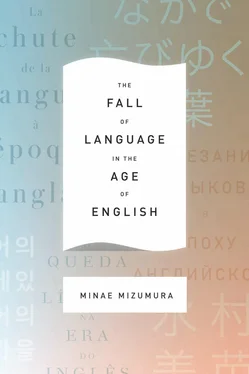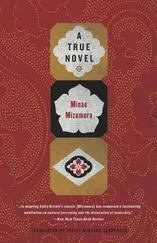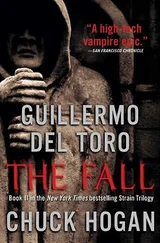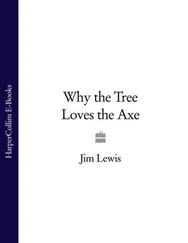Reading engenders the desire to write. The notion of democracy that Japanese people eagerly embraced after World War II gave further impetus to that desire: every individual should be able not only to read but to write fine literature. More and more venues opened so that anyone could become a writer who so desired and was not totally devoid of talent. Aspiring writers from all walks of life got together and self-published coterie magazines called dōjin-shi (literally, “magazines for the like-minded”), usually cheaply printed on flimsy paper. These sprang up like mushrooms after the rain. Established publishers with their own monthly literary journals featured not only renowned authors but also those just making names for themselves. Authors awarded newcomer prizes gained full recognition as writing professionals on winning the prestigious Akutagawa Prize; after that, by continuing to receive a succession of yet more important prizes, they went on to gain expert status. Literary awards proliferated until literally hundreds of them existed, covering every conceivable genre and age-group. In time they spread a wide and tight-knit net over the country that generously rewarded every literary talent, however slight. The ideal world where every individual is both a reader and writer of literature had already materialized in Japan, well before the advent of our “utopian” Internet age of blogs and fan fiction. Yet, however idyllic that world may have been, underneath the surface modern Japanese literature was indeed, in the words of Professor Hirota, “headed for a fall.”
6. ENGLISH AND NATIONAL LANGUAGES IN THE INTERNET AGE
The phrase “the end of literature” is now a cliché. And it has been a cliché, not only in Japan but all over the world, for half a century if not longer. Yet in recent years, voices bewailing the end of literature are gaining new urgency. Fewer and fewer people read literature deserving of the name; even the classics, novels once considered must-reads, are increasingly shunned. In this chapter I will start by departing from Japan to examine what the end of literature might mean for all concerned.
Laments about the end of literature can no longer be dismissed as the pastime of old fogies who have nothing better to do than reminisce fondly about “the good old days.” These laments come amid three significant historical changes that have indubitably weakened the status of literature: the advancement of science, the diversification of cultural goods, and the spread of mass consumer society. These factors affect people’s behavior where literature is concerned — their literary reading habits — now as never before.
Let us begin with the advancement of science. Today, people who wish to explore the eternal question that haunts the human race — what is a human being? — are turning increasingly to the latest scientific advances, particularly in fields such as genetics and brain science. The more personal question — who am I? — can also be answered to a significant degree with a DNA test or a brain scan. Scientists can objectively measure our likelihood of becoming an alcoholic or our sensitivity to others’ pain. The growing importance of science is manifest in universities around the world that are relentlessly downsizing the humanities, especially literature.
Second is the diversification of cultural goods. By “cultural goods,” I mean products that function at once as art and entertainment. At one time, seeing famous paintings and sculptures entailed traveling long distances, listening to music meant attending live performances, and only city dwellers could enjoy the theater regularly. For most people, by far the most accessible cultural goods were books, especially novels. Printed books gradually fulfilled their potential as mass products and came to be widely spread among the population. In retrospect, the golden age of national language and of the novel, from the latter half of the eighteenth century to the beginning of the twentieth, was the time when novels monopolized the market of cultural goods.
Within the last hundred years, however, new technology has led to the emergence of other mass-produced cultural goods. In the first half of the twentieth century came records, radio, and film, followed by television, videos, CDs, DVDs, video games, music downloads, streamed videos, and more. Particularly significant as cultural goods competing with novels are films and television dramas. In addition to stimulating our audiovisual senses, these cultural goods explore the meaning of human life and thus, like novels, address the question of how one should live. Dethroned, the novel has become merely one of many affordable mass-produced commodities.
All this was compounded by the emergence of the third factor, a mass consumer society. Ever since the written language became a cultural good that circulates in the form of books, every book has had two different values. On the one hand is its “intrinsic value”—how it enriches humanity in the long run — and on the other hand is its “market value.” Even the Gutenberg Bible, as Marshall McLuhan and Benedict Anderson so rightly inform us, circulated not only as a sacred text but also as the first “mass-produced industrial commodity.”
In a mass consumer society, the relationship between those two values becomes more and more arbitrary, for when it comes to affordable cultural goods, what sells is simply what the greatest number of people prefer. Someone who passionately loves a certain tea bowl favored by Sen no Rikyū, the famous seventeenth-century tea ceremony master, will probably have to settle for one that resembles it. Rikyū tea bowls are only for museums. But when it comes to affordable cultural goods, those replicable on a mass scale, things are different. Fans of Maria Callas’s rendering of “O mio babbino caro,” say, or Dean Martin’s “Mambo Italiano” don’t have to consult their wallets and resign themselves to buying a recording of somebody else singing it instead; all are equally affordable. People who choose differently do so not in resignation but out of preference. In the case of affordable cultural goods, sales are a direct reflection of consumer preference. And obviously, what sells the most does not necessarily reflect genuine discernment.
Art is not democratic. Art is sublime.
As consumerism increases, the disconnect between intrinsic value and market value only becomes more pronounced. In a full-fledged mass consumer society, information itself, along with cultural goods, becomes inexpensive — indeed virtually free, and thus ubiquitous. Everyone — rich or poor, aristocratic or common, highly educated or sadly ignorant — shares more or less the same information through the mass media, from newspapers to viral videos. In such a society, everyone, perhaps even royalty, forms part of the masses and ends up contributing to the craze and whirl of the mass phenomenon. Consumers inevitably know what book others are buying, knowledge that often prompts them to rush out and buy the same book, which, in turn, prompts still others to do the same. If this chain reaction gains enough momentum, it can trigger a mass phenomenon in which some books sell at an explosive rate — like the Harry Potter series.
A number of factors combined to make the Harry Potter series an unprecedented global marketing success. For one thing, the series was written in English. For another, it became a best seller in the United States. And it is certainly a product with its share of charm. Yet none of this can really explain why the books became the biggest sellers in history, sought by everyone from English aristocrats with libraries built up over generations to families in the burgeoning Asian middle class purchasing a children’s book for the first time. Only the snowball effect characteristic of a mass phenomenon can adequately explain the worldwide lightning success of the Harry Potter books.
Читать дальше












